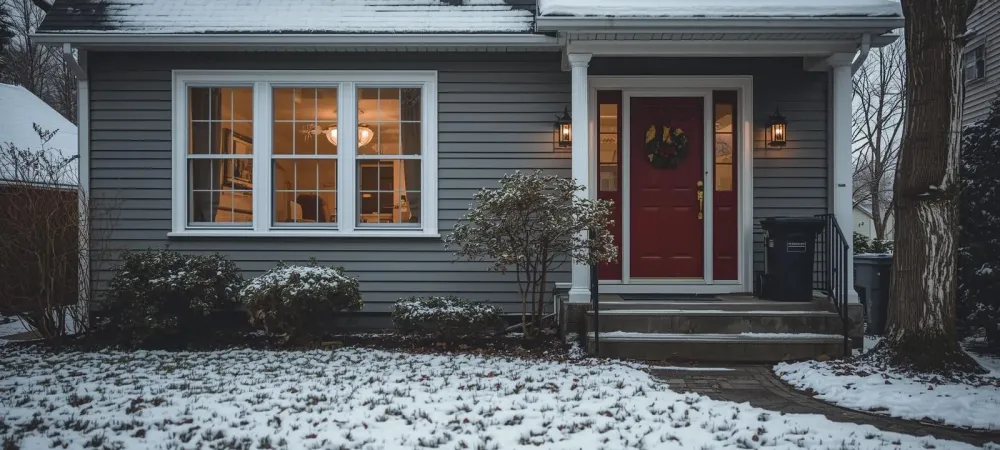
Winter Outdoor Pest Prevention: Protecting Your Michigan Yard from Rodents, Spiders & Overwintering Insects
Michigan's winter brings more than just cold; it drives a surge in pest activity as rodents, spiders, and overwintering insects seek warmth and shelter inside homes and yards. Preparing your property to prevent these pests is essential to avoid health hazards, property damage, and persistent infestations. This blog dives deeply into proven, research-backed strategies tailored specifically for Michigan homeowners, combining local studies and expert advice to help you keep your yard and home pest-free this winter.
The Quick Answer
Winter in Michigan increases pest activity as mice, rats, spiders, boxelder bugs, and Asian lady beetles migrate indoors in search of shelter and warmth. The most effective prevention includes sealing all cracks, gaps, and openings around your home to block entry points, managing yard clutter and firewood storage properly, and scheduling professional pest control treatments from November through March to target overwintering pests proactively. These steps help prevent infestations, reduce health risks from pests, and protect your property. Establishing these measures early ensures you stay ahead of seasonal pest behavior.
Why Preventing Winter Pests in Michigan Is Crucial for Your Home
Michigan State University Extension explains that pests actively move inside during winter, “in search of warmth,” increasing the risk of infestations in structures (Michigan State University Extension, 2018). Rodents such as mice and rats can cause significant damage by gnawing wiring and insulation, while insects like boxelder bugs and Asian lady beetles become nuisances as they cluster on homes. The Michigan Department of Agriculture & Rural Development highlights that effective “exclusion and sanitation” efforts remain critical to mitigate these biodiversity challenges (Michigan Department of Agriculture & Rural Development, 2024). Without proactive prevention, pest populations establish themselves and become more difficult and costly to control as the season progresses.
How to Identify and Seal Pest Entry Points to Block Winter Intruders
Sealing entry points is foundational to winter pest prevention. Rodents can squeeze through gaps as small as a quarter-inch, while insects exploit cracks around windows, doors, and foundation walls. Conduct a thorough exterior inspection, paying close attention to:
- Door sweeps and weather stripping conditions
- Gaps around windows and siding
- Openings around plumbing, electrical conduits, and dryer vents
- Damaged or missing screens on vents or attic openings
MSU Extension recommends installing “kick plates on doors and crushed wire mesh on vents” to bolster rodent resistance (Michigan State University Extension, 2018). Sealing these vulnerabilities physically blocks pest entry, cutting off access to shelter and food sources inside your home.
Yard and Property Management Strategies That Discourage Overwintering Pests
Pests seek not only shelter in structures but also cover near homes. Overwintering insects and rodents thrive in dense vegetation, leaf litter, and cluttered firewood piles. Following these practices reduces harborage zones:
- Remove leaf piles, dead branches, and garden debris adjacent to foundations
- Store firewood at least 20 feet from the home, elevated off the ground to limit rodent nesting (Michigan Department of Agriculture & Rural Development, 2024)
- Trim tree limbs and shrubs so they don’t touch the building, removing insect travel pathways
- Maintain clean, dry areas around the home’s perimeter to prevent moisture buildup that attracts pests
Research confirms that outdoor habitat management effectively disrupts overwintering insect survival and rodent nesting behavior (Michigan State University Extension, 2012). Implementing these landscaping and sanitation practices complements structural exclusion efforts for comprehensive pest control.
Natural and Mechanical Pest Deterrents for Added Protection
Beyond sealing and sanitation, natural repellents and traps provide additional defense against winter pests. Peppermint oil, cedar chips, and vinegar sprays near potential entry points deter rodents and insects by masking attractant odors. Supervised placement of mechanical traps along pest pathways offers early detection and population control for mice and rats. These solutions are especially valuable as part of an integrated approach before pests firmly establish themselves indoors.
Balancing DIY Prevention with Professional Winter Pest Control
While diligent DIY efforts addressing common entry points and property sanitation greatly reduce pest risks, persistent or large infestations often require professional intervention. Pest control specialists in Michigan offer comprehensive winter treatment programs that:
- Assess and identify less visible entry points or conditions attracting pests
- Apply targeted barrier treatments customized to seasonal pest behavior
- Provide ongoing monitoring and preventive maintenance from November through March
Employing experts ensures long-term, season-appropriate pest management and peace of mind.
When to Seek Expert Pest Control Assistance
Recognizing when DIY measures are insufficient is crucial. Homeowners should contact pest professionals if:
- Pests remain active inside despite sealing and sanitation efforts
- Signs of infestation, such as droppings, nests, or gnaw marks, appear
- Structural damage or large pest populations are identified
Engaging certified pest control professionals early in the season provides tailored prevention plans designed to address Michigan’s specific pest challenges, thereby minimizing the impact of wintertime pests.
Protect Your Home with Early Winter Pest Prevention
The key to successful winter pest prevention is early, thorough preparation combining exclusion, yard care, and, when appropriate, professional treatments. These efforts protect your Michigan home from rodents, spiders, and overwintering insects that threaten comfort and safety. Act now to secure your property and enjoy a pest-free winter season.
Sources
- Michigan Department of Agriculture & Rural Development. State of Michigan Integrated Pest Management Training Manual. MDARD, 2024, michigan.gov/mdard/-/media/Project/Websites/mdard/documents/pesticide-plant-pest/pesticide/ipm_training_manual.pdf
- Michigan State University Extension. “Preparing Your Barn for Winter—Pest Management Series, Part One.” Michigan State University Extension, 30 Sept. 2018, canr.msu.edu/news/preparing-your-barn-for-winter-pest-management-series-part-one
- Michigan State University Extension. “Winter Annual Weeds May Present More Management and Insect Challenges.” Michigan State University Extension, 12 Mar. 2012, canr.msu.edu/news/winter_annual_weeds_may_present_more_management_and_insect_pest_challenges
